Neumann’s newest impresses with technical prowess but fails to charm.
I’ve always had a soft spot for Neumann. Their no-nonsense industrial design does it for me, and their technological muscle rarely fails to impress me. Pretty sure I was one of the first to review their first foray into the headphone domain – the closed-back NDH 20.
- A technical tour de force both in sound and build quality
- Deep and clean low end for an open-back dynamic
- Mids are superbly clear and neutral
- The cable supports balanced drive
- Neat packaging
- Stellar spare part support
- A capable DSP candidate
- Good ergonomics
- Severely lacks engagement
- The bass extends low but doesn’t hit right
- Upper mids scooped
- Headstage is not very pronounced
- The treble has slight peakiness
- Included accessories only okay
Being a subsidiary of the headphone powerhouse Sennheiser, Neumann has always stimulated my headphone nerd longing. Will the NDH 20 be a closed-back HD650? And now – will the NDH 30 end up being a more technically proficient HD650?
In the end, they are a bit of everything. Upon listening, it’s immediately apparent that the Neumann NDH 30 aren’t based on an almost 30-year-old design and bring good technicalities to the table. However, they do fall short of the venerable HD650, just like many of their peers.
Read on to find out how!
Company Overview
It’s not an understatement to call Neumann a legendary pro audio company. Their microphones have been used by all kinds of celebrities – starting from a certain controversial Austria-born politician in the 1930s all the way up to now with Billie Eilish and others looking to make their mark upon the world with sound.
In 1991 Neumann was acquired by Sennheiser and, in 2010, added KH-series studio monitors to their pro-audio suite of products. KH comes from Klein & Hummel – another German pro-audio company Sennheiser acquired in 2005. Despite having close ties to the headphone giant, the first pair of Neumann headphones were introduced only in 2019 – the closed-back NDH 20.
Neumann is known for being an objective audio lover’s darling in the audio monitoring scene. All of their speakers exhibit state-of-the-art measured performance, yet they haven’t quite reached the mythical status of Augspurger, ATC, or PMC, mainstays of superstar studios around the globe.
Technical Specifications
- Form: Open-back, over-ear
- Drivers: 38mm dynamic
- Nominal Impedance: 120Ohm
- Sensitivity: 104dB/V at 1kHz
- Max Power Handling: 1000mW/200mW continuous
- Frequency response: 12 – 34 000Hz
- Total Harmonic Distortion (THD): <0.03% at 100dB/1kHz
- Cable Entry: Right earcup, locking TRRS 2.5mm
- Weight: 352g (without cable)
Packaging
The Neumann NDH 30 come in an elegant glossy cardboard box. My only gripe is that, like when I bought NDH 20, it will be painful for many to throw the box out.
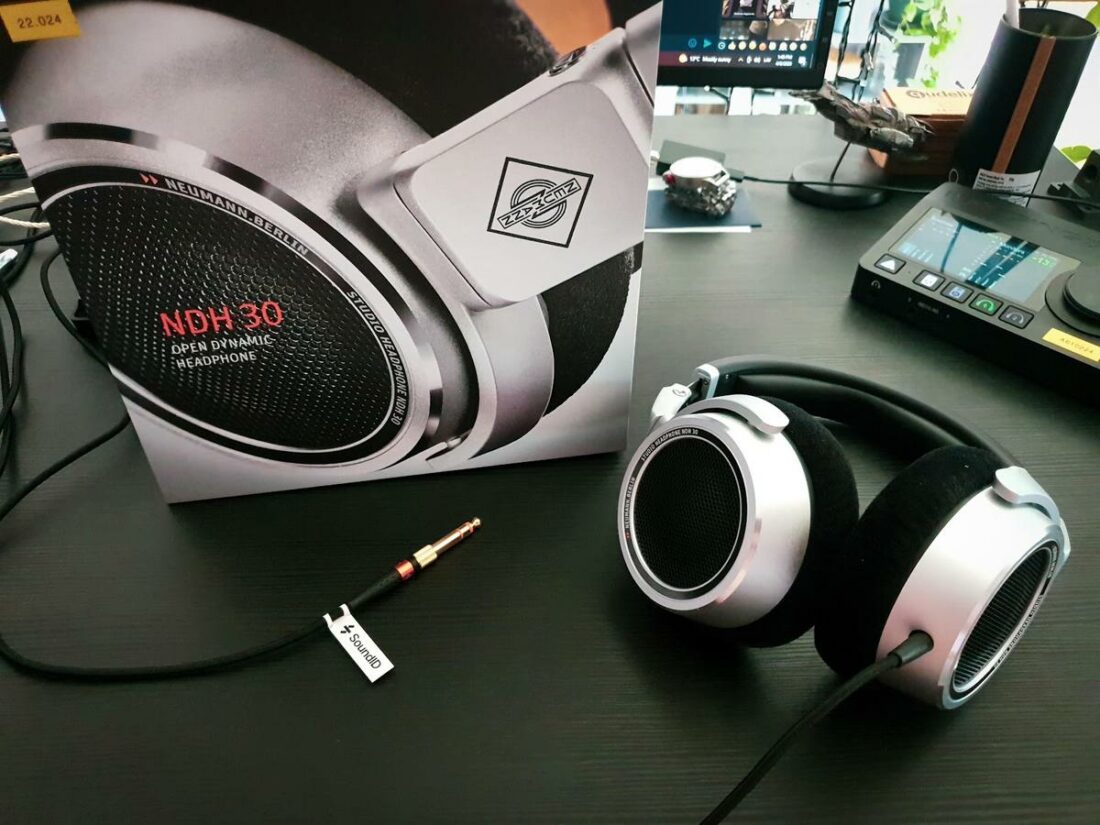
In the box
- The NDH 30 headphones
- 3m straight 2.5mm TRRS to 3.5mm cable
- Screw-on 3.5mm to 6.35mm adaptor
- Cloth pouch
- Quick guide
- Safety guide
Cable
The included cable is cloth covered and generally works fine. The 3m length is a bit of a nuisance for desktop use, but it’s not hard like the cable Focal higher-end headphones use. Good that Neumann has finally opted for a 4-conductor design which makes it easy to DIY a balanced adaptor. Just be prepared to deal with enameled wire.
I’m not too crazy about the cable having a proprietary molded locking 2.5mm TRRS jack, as it makes DIY’ing cables harder.
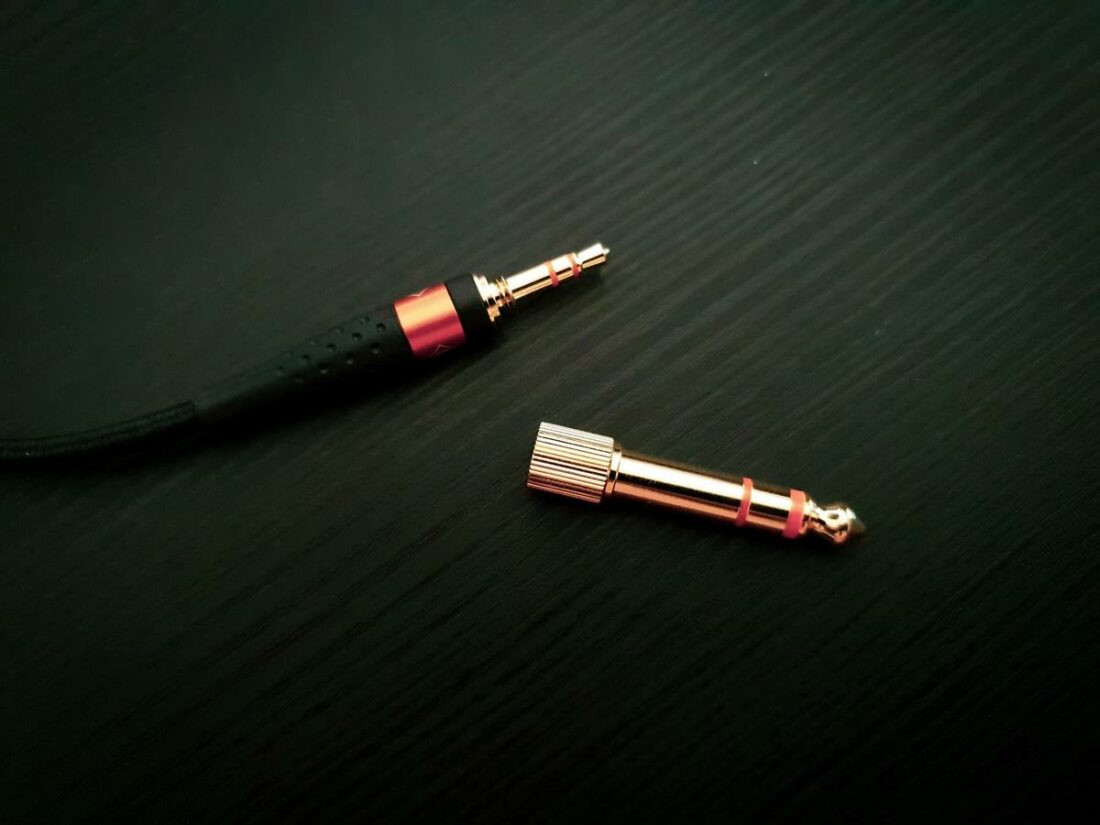
I love that Neumann has recessed the earcup cable receptacle, which protects the connection from mechanical damage. Both axial and lateral tugs should, at worst, only damage the easily swappable cable.
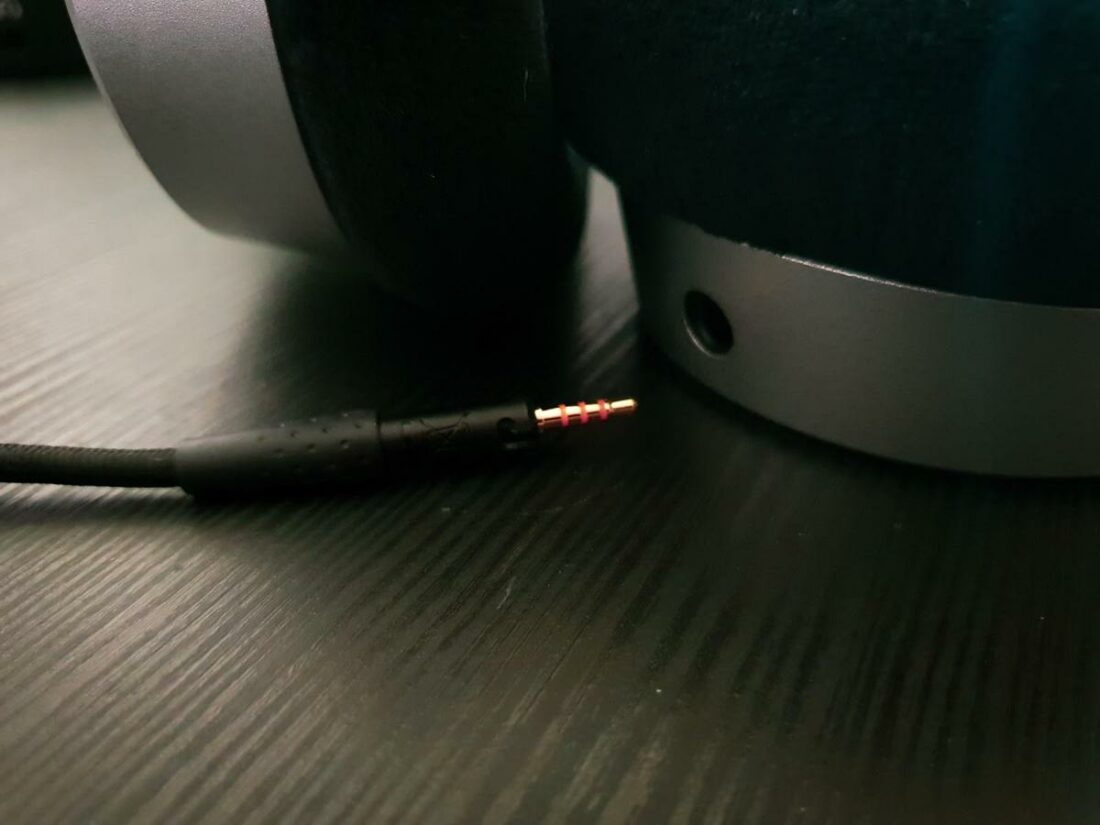
Design
Just like their legendary microphones, all Neumann headphones have a great understated industrial design that combines matte sandblasted aluminum, black rubber, and orange accents. It looks good new, ages gracefully, and feels premium in hand. Truth be told, I’m a sucker for this stuff.
Comfort
Ergonomically, the NDH 30 get high marks from me.
It’s not the “feels like I’m wearing nothing” act the Sennheiser HD800 pull off, but I could wear the NDH 30 for a full day. The pads are circular, huge, and cushy. These headphones use clamping force to stay on your head, but it’s never annoying. There are no pressure hotspots and no HD650 cheekbone death grip.
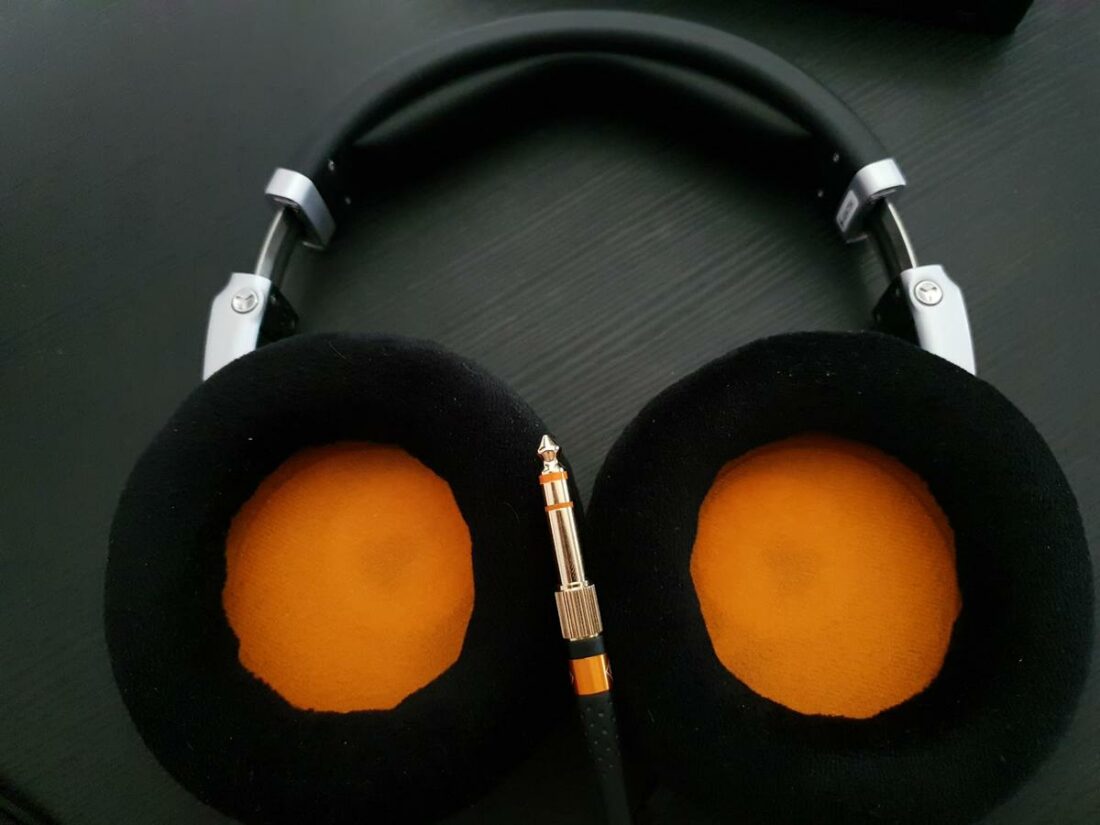
Internals
The Neumann NDH 30 use heavily modified Sennheiser dynamic drivers angled in the earcup.
Some have speculated that the driver is the same as in Sennheiser HD558 and HD598 headphones, as the chassis bears the same model number. While much of the driver might be the same, it is evident that the voice coil has been rewound to 120 Ohm nominal impedance.
Neumann specifies that all of their headphones use a 38mm driver instead of 40mm, as used by Sennheiser.
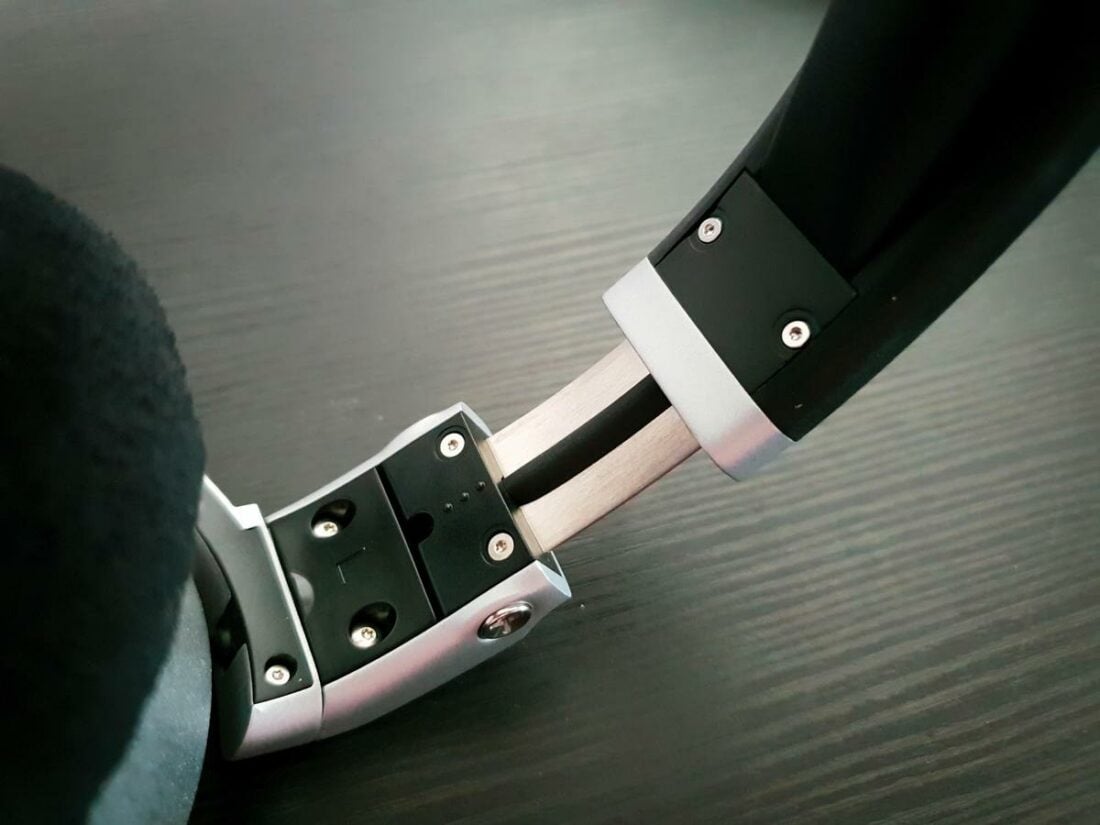
Neumann NDH 30 Sound
The NDH 30 are primarily designed to be the studio engineer’s tool for peering into mixes when monitor speakers are unavailable. What does it mean exactly?
Neumann states that these headphones sound like their monitor speakers calibrated to flat in a treated control room.
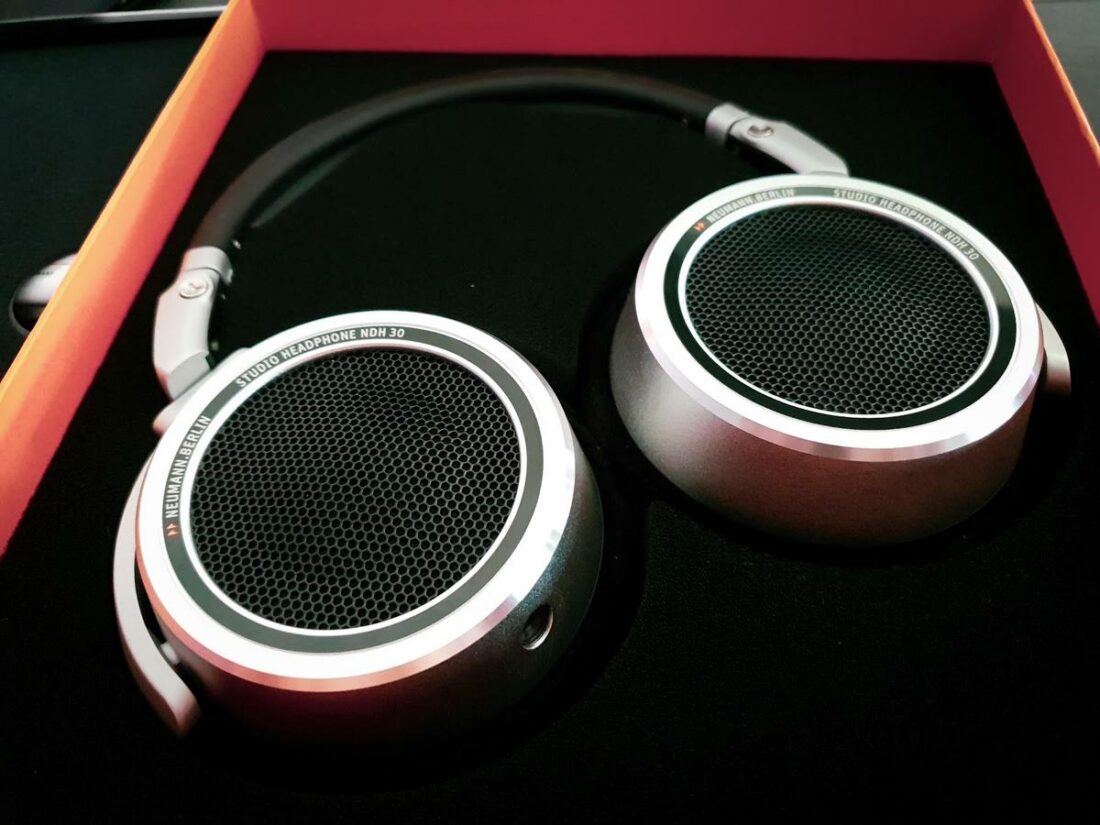
Having headphones tonally sound like calibrated speakers in a decent room has been the gold standard for developing target curves.
That’s how Harman Research did it and used listening tests to verify the results. At the same time, companies like Beyerdynamic stick to their house sound and swear that their customer base is proof that it works.
So does the NDH 30 deliver what the company promises? Not completely, in my opinion.
Tonal balance
While most of the frequency spectrum on the NDH 30 is faithfully reproduced, they have a curious upper-mid scoop starting at 1.5kHz right up to 3.5kHz. Audibly, it makes the overall tonality calmer and inoffensive but also robs voices, strings, and synths of their bite. Thus the listening experience is very easy on the ears but also quite uninvolving.
Technicalities
I have little qualms about the NDH 30 here. The driver is fast, detailed, and has low distortion, thus checking most hi-fi boxes. It feels more modern than the HD600, HD650/6XX, and even the fresher HD660S2. The headstage isn’t anything spectacular like on the HD800 or HD800S. I’d rate it as just average, like on the Focal metal driver headphones.
I can’t detect any distortion throughout the frequency range, even on high volumes, which leads me to believe that the NDH 30 is a decent candidate for corrective EQ. Of course, whether anyone can do something about their lack of physicality remains to be heard. I was only able to alleviate the upper-mid scoop and add some extra low-end.
When I tried the NDH 30 on different sources, it was apparent that the low-distortion nature of the Neumann-tuned driver makes it scale pretty well with better gear.
Bass
There is less roll-off than on the HD6XX series headphones, and deep notes carry almost no distortion or noise. Just like with the NDH 20, Neumann engineers are doing wonders with the Sennheiser 40mm (or 38mm?) driver.
I am delighted by the tight and deep sub-bass on the NDH 30.
Going further up, mid-bass is where I found the NDH 30 to be a bit lacking.
Tonally it’s fine, but for some reason, they manage to sound pretty anemic. To get any kind of impact from them, I occasionally find myself cranking the volume higher than I would like.
Midrange
As for mids-proper – wonderful! Clean, linear, and very detailed. In my opinion, it doesn’t matter how spectacular is any other aspect of a headphone if the mids aren’t right. And “right” is an understatement here. With the right recording, the Neumann NDH 30 deliver the goods here.
Treble
The treble and upper-treble on the NDH 30 are detailed yet slightly uneven. There’s no severe peaking that imbues the sound signature with faux detail, just enough to make overtones sound strange if they hit the right regions. Not terrible, but also not too remarkable.
Where to Buy
Conclusion
As with many things, your opinion of the NDH 30 will depend on your expectations. No, they aren’t the second coming of HD650. We can all settle down and resume dreaming. They are, however, a pair of decently proficient modern headphones – with one serious flaw.
What all but ruins the NDH 30 for me are the lack of impact and bite. The listening experience is quite informative – you can tell the music is happening, but it isn’t happening to you. They may work for sound professionals. I can imagine many being wowed by the detail and lack of ear fatigue.
I recommend that everyone audition the Neumann NDH 30 before buying. They might work for some, and judging by the thread on Head-fi, they do. But for me, the listening experience is similar to listening to small-sized studio monitors – I know what’s happening, but I can’t really feel it.
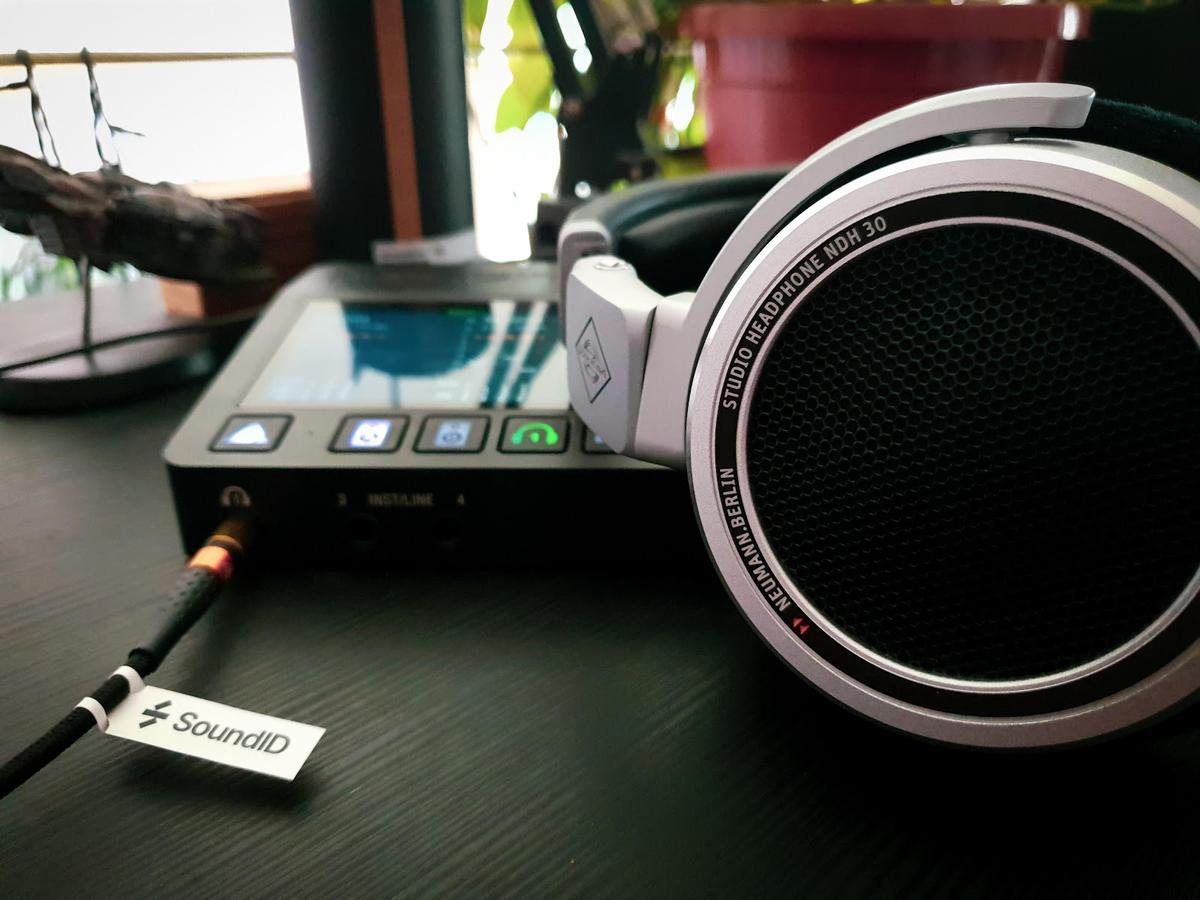
I think that trying to shoe-horn these into being a direct competitor in the hifi world is kind of a mistake. They are designed for audio professionals. As an engineer, I have gone through various headphones, including the Sennheisers mentioned in the review and none of them translate nearly as well as the NDH-30s. And none of them let me mix for extended periods like the Neumanns. I also use Neumann KH80s with their KH750 subwoofer, so it’s nice to have them in the same family. They also translate a lot better than the NDH-20s. Maybe they only get 3 stars in the hifi world, but in the audio engineering world, they get 5 stars from me.
Hey, thanks for sharing your experience with them! I was working for 5 years at Sonarworks and believe me, I know hard it is to get a pair of headphones to translate well. Generally what I’ve found is that monitoring gear that does great also tends to do nicely in the hi-fi realm. I’ve had hundreds of clients tell me that after fixing their monitoring issues they’ve finally started using their stuff to actually enjoy the music. That’s one of the reasons why KH310s (on top of DIY subs) and NDH 20s were my daily drivers for a long time.
As for 3 stars, at Headphonesty they represent – “A decent representative of value and sound quality at its price point.” In my opinion, it was a fair assessment of what the NDH 30 brings to the table. And thanks for your comment – it might be helpful for pro audio people to see your take on them!
The NDH30 have a bit of a cult-like following on the HeadFi forums. FYI it was confirmed by Jermo K. a senior engineer at Sennheiser that these drivers are the exact same drivers as in the HD 560S, and I quote: “The highest performance version of it sits in the HD 560S, with the new polymer blend diaphragm and a very light aluminium voice coil. This transducer is also implemented without changes in the NDH 30. However, Neumann is incredibly strict on tolerances for this model in a way that it’s on the edge of what’s possible in headphone series production, which may contribute to positive characteristics like soundstage.”
Thanks for the background info! The driver part numbers seem to match a lot of different drivers then. Makes sense about the HD560S, they have the same impedance. Would be interesting to compare the NDH 30 to the HD560S and see what Neumann has brought to the table.
Thanks for the review, Rudolfs. I can agree with much of what you’ve written, but, I have to ask, if you find a lack of impact and bite, are you sure you’re wearing them correctly? Cable on the right, not the left as is usually the case with studio headphones. All of your comments about the lack of bite and uneven treble could be explained by wearing them the wrong way around due to the effect of the offset drivers.
That would have been pretty embarrassing, wouldn’t it? I’ve had the NDH 20 previously as my daily driver for 3 years, so I’m pretty used to having the cable on the right side. I was able to confirm the uneven treble with measurements, yet the lack of “oomph”, I dunno how to measure that. Maybe give it to a dozen other people and record their impressions.
Yes, I realised that when I read again that you’d had the NDH 20 previously! Putting them on the wrong way around does seem to be a common problem however, even amongst some reviewers! I do actually know what you mean by the lack of ‘oomph’, but I consistently find myself preferring the true bass extension over mid-bass weight, which is often watch lends that feeling of engagement, I believe. Also, the bass is so different from the NDH 20 (which has a bit too much ‘oomph’ in my opinion). Perhaps the contrast is what makes the NDH 30 seem somewhat ‘lean’ to you? I honestly find them musically very engaging, as well as extremely accurate.
My friend, for sure you had them on the wrong way around.
I’m not a fanatic when it comes to these things. But trust me the last thing I would describe these as is “lack of oomph”. I have some very, very high end headphones. Ones that are made for oomph, and even though these doesn’t sound as “natural” or “coloured”, they definitely go all the way up there with the delivery of dynamics. The sound is more fragmented on these, so it becomes easier to “read” the sound on these.
So, not the top dogs for hifi but definitely good for technical work.
As I am considering buying a Merging Anubis or Neumann MT48, any tips on connecting a Toslink CD player output to a Merging Anubis input?
Neumann MT48 should be a good bit easier to use in a non-studio scenario as the Anubis is very AoIP oriented. On the Anubis you’d have to create an input with optical as the physical input and then route it to the respective output.
The NDH 30 is an open version of the NDH 20, they tried to compensate some harshness and make the low end work on the NDH 30. They were partially successful with it. The other thing, for some headshapes, or people with small ear you can move the cans around and it can couse the soundscape to change drastically. So you have to find a position when it sound more linear. If you are mixing in these. And as the website states it was made with “Mixing, Mastering engineers work from home” in mind. So CoVid-19 made these headphones really. I would’ve call them Neumann CV19 anyway. And unless you have a very good reason to mix or master in headphones, I wouldn’t recommend it to anyone. You should always do 20-30 minutes working time and 15 minutes of a break. Because even with Alien ear gels from space would most likely cause ear fatigue, that’s how it works and you will hear only bogus after that 30 minutes period.